Benjamin Church House
Introduction
Text-to-speech Audio
The oldest surviving house in Milwaukee, the Benjamin Church House, also known as the Kilbourntown House, is lauded as one of the greatest examples of Greek Revival architecture in the country. Originally located in the Kilbourntown settlement west of the Milwaukee River in what would become Milwaukee, the house was built in 1844 by carpenter Benjamin Church, a New York Yankee who migrated to the area. In 1938 the home was slated for destruction by the City of Milwaukee for tax delinquency. It was saved by a joint effort of the Milwaukee County Historical Society, Milwaukee County Parks, and the Colonial Dames of Wisconsin. It was moved to Estabrook Park and restored as part of a Works Progress Administration (WPA) project. It is now on the National Register of Historic Places and maintained by the Milwaukee County Historical Society and the Milwaukee County Parks as a historical house.
Images
Benjamin Church House

Benjamin Church House in its original location
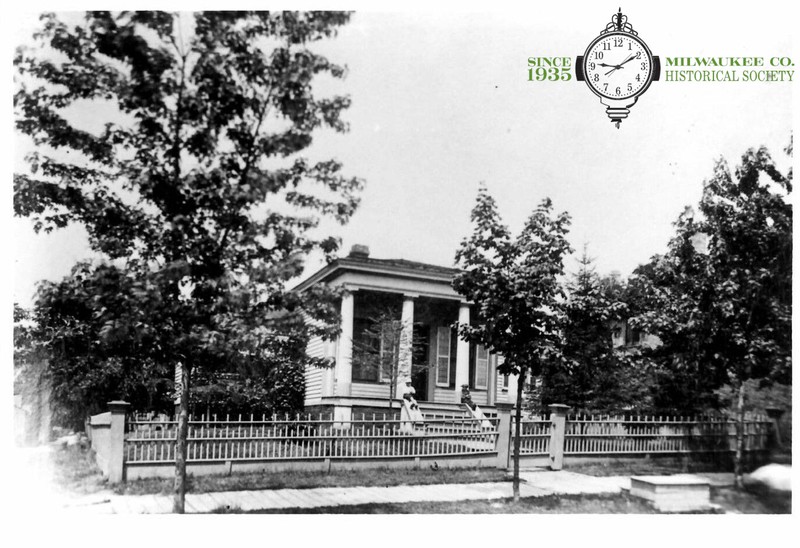
Benjamin Church House in 1938 at its original location
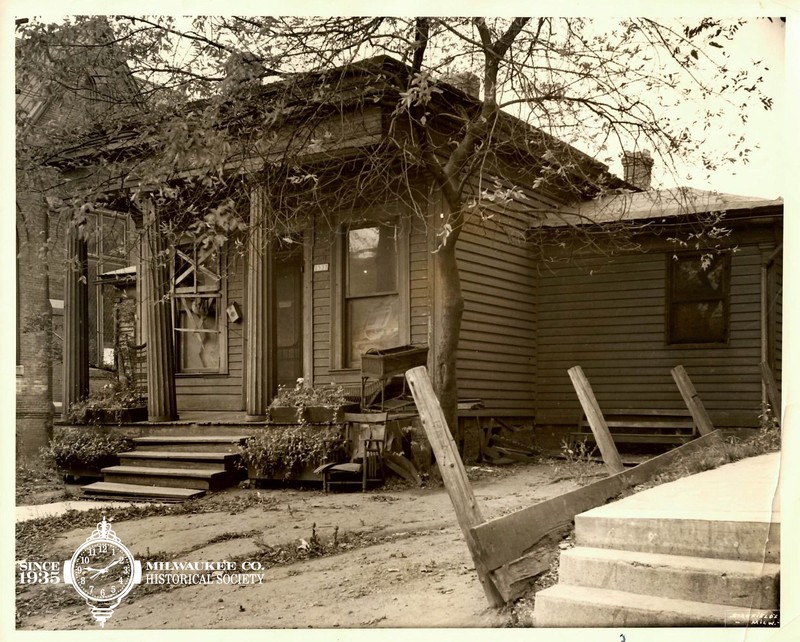
Moving part of the Benjamin Church House to Estabrook Park
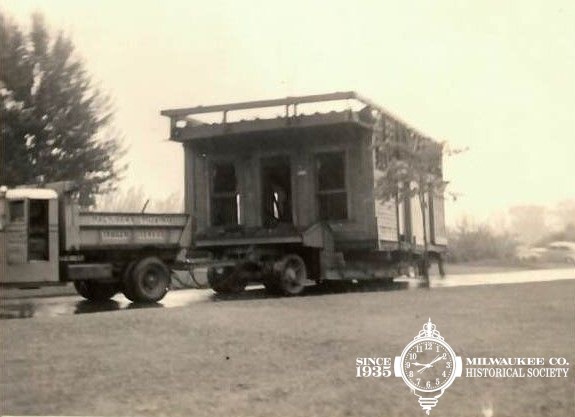
Rebuilding the Benjamin Church House at Estabrook Park
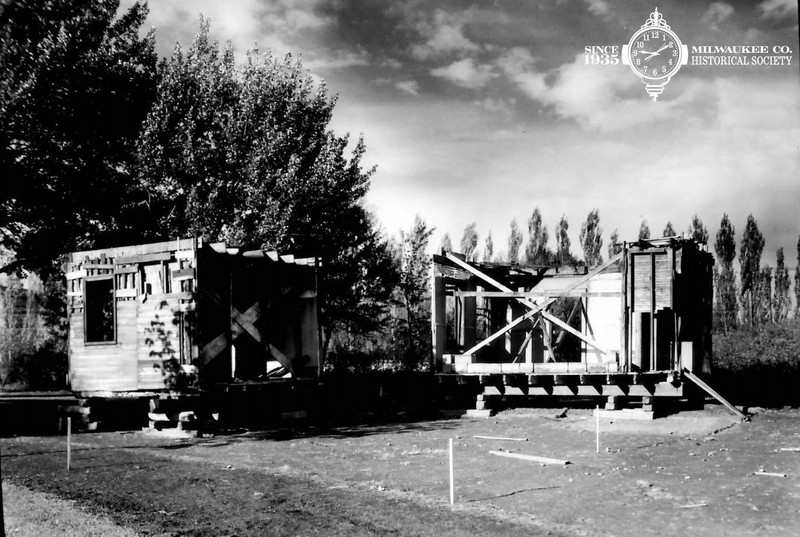
Interior designed and furnished by the Colonial Dames
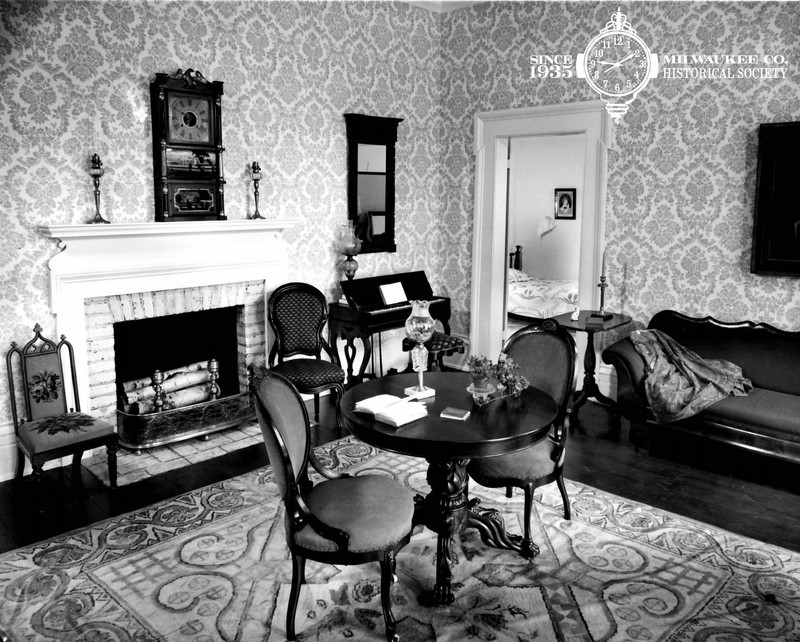
Dedication ceremony
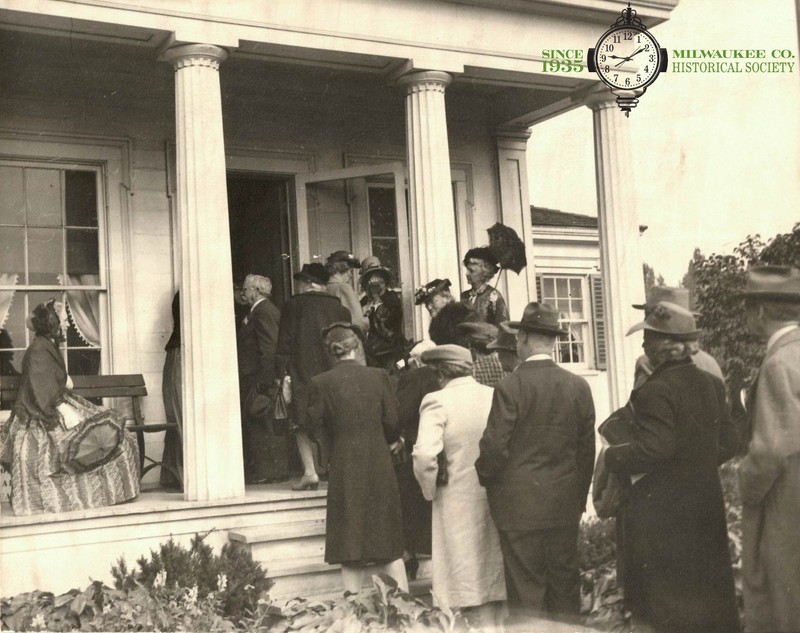
Benjamin Church House in Estabrook Park in June 1968

Interior after fire in November 1970
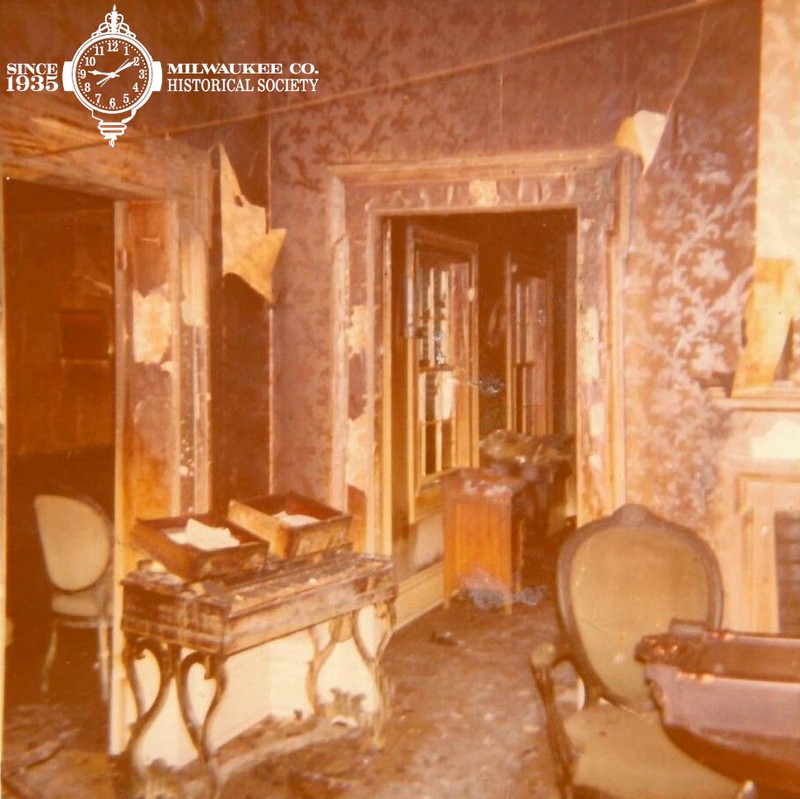
Backstory and Context
Text-to-speech Audio
Milwaukee was formed by the merging of three settlements, Kilbourntown, Juneautown, and Walker’s Point, in 1846. Kilbourntown and Juneautowncompeted against each other, especially in trade as they each bordered the Milwaukee River, with Kilbourntown on the west side and Juneautown on the east side. In 1840, the Wisconsin legislature called for a bridge to be built across the river, and in May of 1845, Byron Kilbourn dropped the west side of that bridge into the river. An east side group subsequently destroyed two other bridges to essentially cut off the west side, leading to an outbreak of violence between Kilbourntown and Juneautown. It was in Kilbourntown, just a year before this infamous “Bridge War,” that carpenter Benjamin Church began to build his family's home.
Born in New Paltz, New York in 1807, Benjamin Church moved to Milwaukee in 1835 and became a leading Milwaukee carpenter, working as lead carpenter on buildings like the Washington House hotel. He was civic minded and served as a trustee for the West Ward in 1844 and 1845, served on the Board of School Commissioners and as a ward assessor. Church was also a founder of the Royal Arch Masons in Milwaukee and the Second Ward Cemetery Association, a member of the Old Settlers Club, and involved in Masonic life in the city.
Church chose to build in the Greek Revival style as he was familiar with it from his training in New York. He constructed his house with both local and imported materials. The millwork, for example, was ordered from Buffalo, NY, and shipped by boat through the Great Lakes as it was not available locally. Upon removing the siding of the home, cream city bricks stamped with John A. Messenger’s initials and the year 1844 were discovered. Messenger operated a brickyard in Milwaukee and is believed to have been driving the horse and buggy that Joshua Glover used to escape to the Underground Railroad in 1854.
Benjamin Church and his wife, Pamelia, had six children, with five surviving into adulthood. Church died in 1887 and is buried at Forest Home Cemetery on the south side of Milwaukee.
The Binzel family purchased and lived in the home from 1884 to 1922 at which time it became a rental property for many years and fell into disrepair. In the mid-1930s, Nora Hyman, an African American social worker rented the house for herself and her 9 children. She attempted to improve the home, but her efforts failed and in 1938 the home was repossessed for tax delinquency and scheduled to be demolished.
The destruction had already been scheduled when Frederic Heath, a Milwaukee County Supervisor who helped found the Milwaukee County Historical Society and develop the County Park system, stepped in and asked for it to be delayed long enough to request the house be preserved for its historical significance. Unfortunately, whether intentional or not, the destruction of the house had begun before Heath was notified. As soon as Heath discovered what was happening, he stopped the demolition, but damage had already been done, most notably to the roof.
The Benjamin Church House was of particular interest due to its Greek Revival style, exceptional craftsmanship, and age. It was set to be transferred to Estabrook Park in Shorewood under the supervision of the Milwaukee County Parks, Milwaukee County Historical Society, and the Works Progress Administration (WPA). The restoration was designated as a WPA project, but it was difficult to find workers with the highly specific skills needed to recreate the craftsmanship in the house, so restoration was slow.
The WPA Handicraft Project, under the direction of Elsa Ulbricht, was also tapped to recreate the soft furnishings and some décor for the home. For instance, they created curtains, hooked rugs and wallpaper. Additionally, the WPA costume unit made mid-19th-century clothing to fill the closets, and new window frames were constructed in the WPA workshop.
The Colonial Dames volunteered to furnish the home. They worked to find antiques of the correct period, some from early Milwaukee families, to fill the house. Furniture that could not be found by the Dames was made by the WPA. The original handmade windowpanes were recreated by the Pittsburgh Plate Glass Co., which had a new plant in Milwaukee. Despite everyone’s best efforts, some aspects of the home were wholly unattainable, such as the hand split pine shingles on the roof, in which case the closest modern match was chosen.
Roughly a year after moving the house to Estabrook Park, the building still lacked a roof and had limited siding. Apart from being exposed to the elements, vandals had been removing portions of the building to use as firewood. Architect Harshaw Hay, who oversaw the move, said that he had unsuccessfully appealed to the WPA for a watchman. The restoration was delayed in part to the debate between the Historical Society and the County Park Commission as to which organization had jurisdiction over the restoration and due to funding constraints on the WPA.
When the Benjamin Church House finally opened to the public on September 14, 1939, a pageant was held with an opening ceremony and performance of “Story of a House”, a play chronicling the history of the building. Nearly 2,000 people attended, enough that an identical pageant was held the following day for an equal number of attendees. The WPA provided the costumes and some actors, while Nora Hyman played herself.
Since September 1939, the Benjamin Church House has been open to the public. In the 1970s it experienced a fire caused by vandals, leading to the destruction of much of the furniture and antiques inside. The Colonial Dames worked to replace the artifacts that were destroyed. Today, the Milwaukee County Historical Society manages and operates the house with support from the Milwaukee County Parks.
Cite This Entry
Lauren Abbott on behalf of Milwaukee County Historical Society and Janean Van Beckum. "Benjamin Church House." Clio: Your Guide to History. August 23, 2024. Accessed April 21, 2025. https://theclio.com/entry/181854
Sources
"Colonial Dames Furnishing Restored Church Residence." Milwaukee Journal.
Harris, Walter J. Greek Revival in Wisconsin. House & Garden. September 1940. 59 - 69.
Heath, Frederic. "The Milwaukee County Historical Society." Wisconsin Magazine of History, vol. 31, no. 2. 181 - 182. Published December 1947.
"Jaunts with Jamie: The Peak of Park Season." Milwaukee Sentinel August 10th, 1955.
McArthur, Annabel Douglas. "Why the Three Front Doors on Tiny Kilbourn Town House Built in 1844?." September 30th, 1952.
“Milwaukee County Historical Society and its Activities: The Kilbourntown House. Estabrook Park.” Mss-1172, Box R3, Folder “(Benj.) Church House, The (Kilbourntown) 1 of 2”. Milwaukee County Historical Society Research Library.
Milwaukee History: History Comes To Life, Milwaukee County Historical Society. Accessed May 29th, 2024. https://milwaukeehistory.net/education/milwaukee-timeline/.
"Pageant Stirs Her Criticism." 1939.
Stevens, Shirley. "North Shore Treasures and Pleasures: The treasure...." The Herald. 1985.
"Storms, Vandals Preying on 100 Year Landmark." 1939.
"Travel Consultant Visits Old Home." Shorewood Herald May 15th, 1961.
“You Are Invited to Attend the Opening of the Restored Kilbourntown House of Benjamin Church.” Received by Albert Schnabel, Sept. 1939, Milwaukee, WI.
Milwaukee County Historical Society
Milwaukee County Historical Society
Milwaukee County Historical Society
Milwaukee County Historical Society
Milwaukee County Historical Society
Milwaukee County Historical Society

